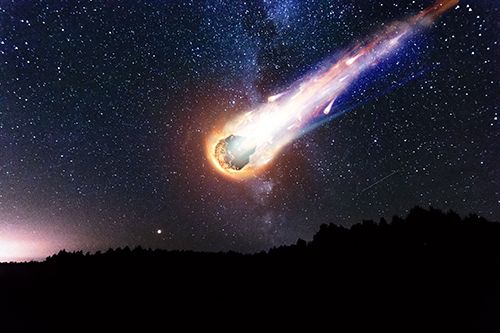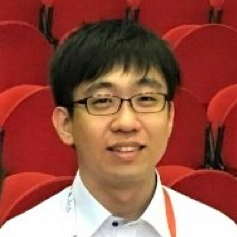Three-Dimensional Chiral HPLC Analysis of Extraterrestrial Amino Acids in Carbonaceous Chondrites
Aogu Furusho from the Graduate School of Pharmaceutical Sciences in Kyushu University, Fukuoka, Japan, spoke to us about his development of a highly selective three-dimensional chiral high performance liquid chromatography (HPLC) system for the determination of extraterrestrial amino acids in carbonaceous chondrites.
markoaliaksandr/stock.adobe.com

Aogu Furusho from the Graduate School of Pharmaceutical Sciences in Kyushu University, Fukuoka, Japan, spoke to us about his development of a highly selective three-dimensional chiral high performance liquid chromatography (HPLC) system for the determination of extraterrestrial amino acids in carbonaceous chondrites.
Q. How did the idea of this research project arise and what are the aims of this research?
A: Amino acids have their enantiomers, D- and L-forms, and they are thought to have been synthesized by chemical reaction on the primitive Earth. Though the D/L ratio of amino acids on the primitive Earth might be racemates, higher organisms now mainly use L-amino acids as bioactive substances. This situation is called homochirality and the origin of this is still unclear. Various amino acids have been found in the extraterrestrial samples (meteorites), and their enantiomeric excesses of L-forms have been reported. Amino acids from the cosmos could be the primitive substances of life, so chiral amino acid properties in the extraterrestrial samples are gathering attention. However, the amount of sample is limited and the amount of amino acids in the cosmic samples are trace-level. In addition, various structural isomers are present, so a highly sensitive and selective analytical method is required. We have developed a three-dimensional (3D) high performance liquid chromatography (HPLC) system combining three different separation modes, reversed-phase, anionâexchange, and enantioselective separations. Amino acids in the samples were first derivatized with 4-fluoro-7-nitro-2,1,3-benzoxadiazole (NBD-F) for a sensitive fluorescence detection and introduced into the 3D-HPLC system. We have determined chiral amino acids in various biological samples including clinical samples. Since the 3D-HPLC system has high sensitivity and selectivity, we thought it would be a suitable tool for the determination of chiral amino acids in the cosmic samples. The aim of this research was to develop a novel 3D-HPLC system for the enantioselective determination of extraterrestrial amino acids in carbonaceous chondrites.
Q. What are you doing in this poster that is novel?
A: This is the first work determining chiral amino acids in the extraterrestrial samples using a 3D-HPLC system. For the determination of chiral amino acids in the extraterrestrial samples, gas chromatography (GC) and LC methods have been used. We previously developed a two-dimensional HPLC system combining reversed-phase and enantioselective separations. However, it was sometimes difficult to precisely determine the trace amounts of chiral amino acids becauseof the disturbance by uncountable nontarget compounds. In this research, we added an anion-exchange separation in the second dimension. With an anion-exchange column, compounds were separated by the difference in the anionic strength, which is quite different from reversed-phase mode. The interfering compounds not separated from amino acids in the reversed-phase column were separated in the second dimension, and the selectivity of the system was significantly improved. The present 3D-HPLC system could separate the target amino acids from interfering compounds in the extraterrestrial samples, and the peaks of the target amino acids were clearly observed without interferences in the third dimension. The determination of chiral amino acids in the Murchison meteorite and the Antarctic meteorite were successfully accomplished.
Q. What were the main analytical challenges you had to overcome?
A: The most difficult challenge was the chiral separation of isovaline (iVal). iVal has two similar side chains, a methyl group and an ethyl group at α-carbon. In this research, we used the original Pirkle type enantioselective column, which has L-leucine at the chiral centre. This column can separate all proteinogenic amino acid enantiomers, and D-forms always elute faster than L-forms. The mixed solution of methanol and acetonitrile containing formic acid was selected as the mobile phase, and various mobile phase conditions were tested. We tried different concentrations of formic acid and different ratios of methanol and acetonitrile, however, the separation was not sufficient. So, we tandemly connected the same two enantioselective columns, and the best separation was finally obtained.
Q. What were your main findings and why are they useful?
A: By using the developed 3D-HPLC system, the Murchison meteorite and the Antarctic meteorite were analyzed. These meteorite samples were provided by Dr Naraoka, who is a professor at the Department of Earth and Planetary Sciences, at Kyushu University. Amino acids in the samples were extracted with hot water and derivatized with NBD-F. All five target amino acid enantiomers, alanine (Ala), valine (Val), 2-aminobutylic acid (2AB), norvaline (nVal), and iVal, were found in both meteorites. The amount of amino acids in the meteorites were determined, and %L values were calculated. In the Murchison meteorite, the D/L ratios of non-proteinogenic amino acids (2AB, nVal, and iVal) were almost equal. In the Antarctic meteorite, the D/L ratios of all target amino acids were almost equal. Regarding the proteinogenic amino acids, Ala and Val, the amounts of L-forms were higher than those of D-forms in the Murchison meteorite. It might be caused by the contamination of L-amino acids, which are abundantly present on the Earth. The Murchison meteorite fell at Murchison village in Australia, while the Antarctic meteorite fell in the Antarctic. The place where the meteorites fell could affect the contamination of the L-forms.
Q. How are you planning to develop this research further?
A: To avoid the contamination of amino acids on the Earth, sampling in the cosmic space is one of the best ways. The two sample return missions Hayabusa2 and OSIRIS-REx are ongoing, and our team belongs to the Hayabusa2 project. We will apply the current 3D-HPLC system to the samples collected in the cosmic space to clarify the enantiomeric excess of amino acids. In addition, some amino acids that were not the targets of this research have been found in the cosmic samples. Therefore, we would like to add other amino acids to the analytical targets.

Aogu Furusho is at the Graduate School of Pharmaceutical Sciences, Kyushu University, Fukuoka, Japan.

Study Explores Thin-Film Extraction of Biogenic Amines via HPLC-MS/MS
March 27th 2025Scientists from Tabriz University and the University of Tabriz explored cellulose acetate-UiO-66-COOH as an affordable coating sorbent for thin film extraction of biogenic amines from cheese and alcohol-free beverages using HPLC-MS/MS.











